Literary Influences in Italy
Posted: September 10th, 2014 | Author: ctbideas | Filed under: ATW Updates | No Comments »As someone who actively enjoys both reading and writing, I find a particular delight in visiting literary spaces whenever I can. Italy offers many places for a book nerd like me to enjoy, ranging from Dante in the 13th century to Keats in the early 19th century.
Rome: The Romantic Poets
Many writers, through the years, have made their home in Rome. During the Romantic era, the Percy and Mary Shelley spent the mornings wandering around the streets and exploring the nearby countryside before withdrawing in the evenings to write (which sounds like bliss to me). They became good friends with John Keats and Lord Byron, along with a large number of other creatives working at that time.
John Keats eventually succumbed to tuberculosis in 1821, not yet 26 years old. His friend, Joseph Severn, had accompanied Keats to Rome and then nursed him through the long illness. Eventually, he was even buried next to him. The house where Keats stayed and died, has now been converted to the Keats-Shelley house. We stumbled upon it while waiting at the Spanish Steps for our free city tour to begin. It’s a lovingly restored house, filled with artifacts, letters, and books written by not only Keats & Shelley, but also the other people prominent among the Romantic era. They even have the life mask of Keats so you can see what he looked like in real life. Everyday, the docents give small interesting talks on a particular artifact in the house.
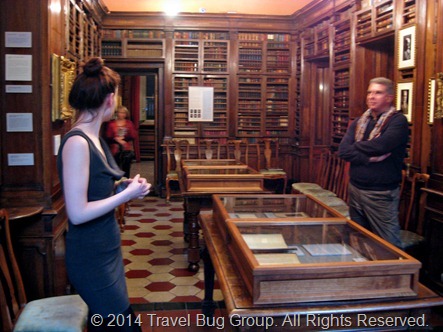
It’s also where we learned where Mary Shelley’s inspiration & impetus for writing Frankenstein came from and the true extent of Lord Byron’s romantic conquests. Most interesting, however, was the particular circumstances of Percy Shelley’s death and it’s connection to Keats. Percy Shelley went out in a boat on the Gulf of Spezia less than a month before his 30th birthday. He washed ashore a few days later with a copy of Keats’ poetry in his jacket pocket, and (due to quarantine procedures) was cremated on the beach. His friend, Edward Trelawny, snatched his heart out of the fire. After Mary Shelley’s death, Percy Shelley’s heart was found in her possessions, wrapped in a copy of his elegy, Adonais, which had been inspired by the death of Keats.
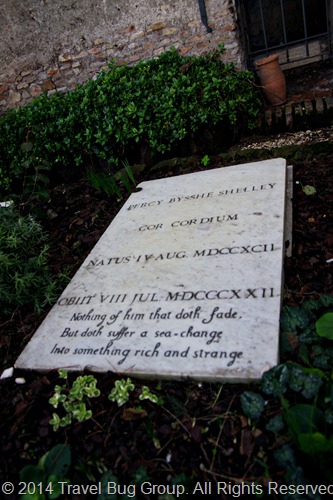
Percy is buried in the Non-Catholic Cemetery, though his heart is buried elsewhere. Beside him, lies Edward Trelawny, a devoted friend until the end. We went to visit his grave there. It’s called the Non-Catholic cemetery because, at that time, Catholics wouldn’t allow non-Catholics to be buried in the same graveyard with them. This graveyard was the answer to that separation. It’s now often called the Protestant Cemetery, but there others besides those of the Protestant faith buried there. Keats is also buried in the same cemetery, though his gravestone doesn’t bear his name. Instead, it says, “This Grave / contains all that was Mortal / of a / Young English Poet / Who / on his Death Bed, in the Bitterness of his Heart / at the Malicious Power of his Enemies / Desired / these Words to be / engraven on his Tomb Stone: / Here lies One / Whose Name was writ in Water. 24 February 1821”.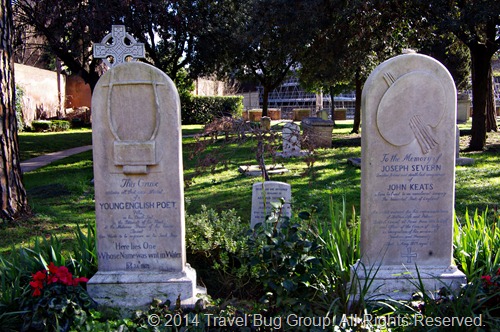
It’s a beautiful graveyard, very peaceful. Nearby it, there’s a small war memorial graveyard, it’s tombstones arranged in orderly patterns, in stark contrast to the Non-Catholic Cemetery with its profusion of elaborate gravestones arranged every which way. Both have their own characters, but it’s lovely to walk through, thinking of the people who lie beneath, of their lives and their lost dreams and private passions, and then thinking of my own life.
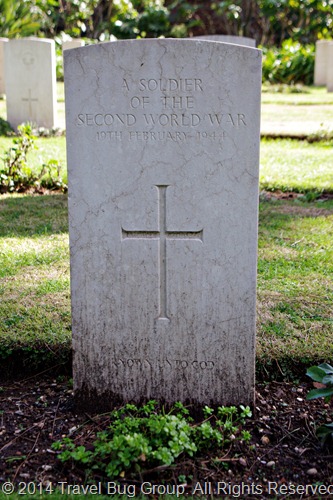
Florence: Dante & Dan Brown
While we were in Turkey, Rick and I both read Dan Brown’s Inferno. Its mystery is constructed around the life of Dante and his most famous creation, The Divine Comedy. The first thing we noticed about Florence when we arrived was that it was completely different from how we pictured it based on Dan Brown’s descriptions. Nevertheless, we continued on our quest for the various places described in the novel, along with the various places important to Dante.
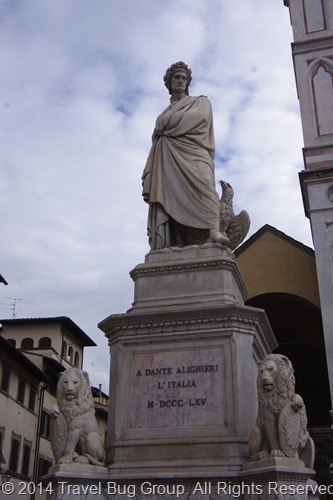
It’s dark inside the small simple church where Dante met Beatrice, his one and only love. Beatrice’s tomb lies inside. On top of the stone with her name written across it are notes from those who are also lovelorn. In contrast, Dante’s funerary monument (he’s buried in Ravenna) lies inside the massively grand Basilica of Santa Croce, across from Galileo Galilei’s and Michelangelo’s tombs. To learn more about Dante’s life, along with Florentine society at the time, we also visited Dante’s House, which is housed on the site where he was born.
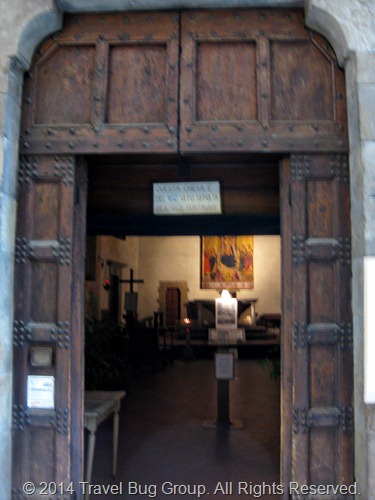
Other sites in Dan Brown’s Inferno we visited were the Ponte Vecchio, the map hallway in the Vatican, and the grottos in the Boboli Gardens, all of which the main characters were being chased through (I admire Robert Langdon’s stamina). And at the end of his novel, he actually goes to Istanbul (!!), which is really fun now that we’ve actually been there.
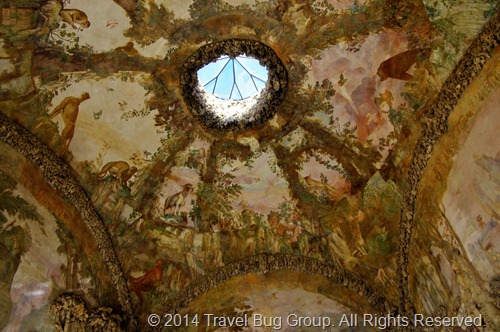
Verona: Shakespeare’s Romeo & Juliet
Verona is known to the outside world mostly through Shakespeare’s Romeo And Juliet. One thing I’ve learned in my travels is that tourism is a booming business, and many places will grasp onto the smallest excuse to draw tourists in. To that end, Verona does a brisk trade in Romeo and Juliet’s tragic love story. Not only are there plaques posted around the city specifying where different events of the story took place, you can go visit Juliet’s balcony and even their respective tombs. Let’s just say that my first reaction to those tourist attractions wasn’t too positive. It seems to muddle the line between fiction and non-fiction, in a cheesy touristy money-hungry way. But, in the end, we still went to visit some of the free places, because, hey, it’s the thing to do when you’re in Verona. 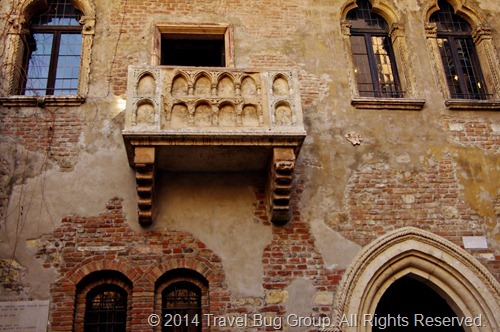
At Juliet’s Balcony, there’s a graceful statue of Juliet. It’s tradition to touch her breast. When I asked my friend if there was a particular significance to touching that particular body part, he just shrugged and said, “We’re Italian.” Which is as a good an answer as anything. When we visited, the statue had been removed for cleaning (perhaps from too much breast-touching), and a small plastic figurine had been left in its place. Not to mess with tradition, Rick still went ahead with the touching.
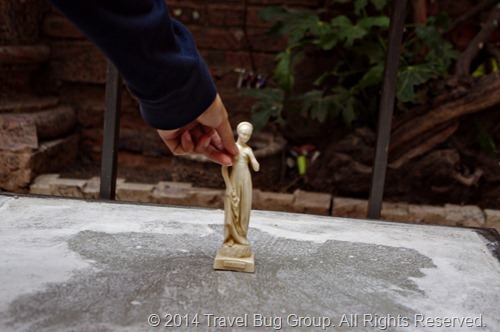
Nearby, there’s a large gate completely covered in bright love locks which seems to have infested the entirety of Europe in various incarnations. In fact, I think I’ll have to dedicate a future post to this interesting phenomenon.

We eschewed looking for Romeo and Juliet’s tombs, because that was too weird for us, going to the graves of imaginary people. Instead we went to go look for Romeo’s house. After much going back and forth down narrow rarely-labeled streets, we finally found a locked gate covered in graffiti with a plaque beside it proclaiming it to be our destination. Poor Romeo. I feel like he should’ve hired a better publicist.

While I still think it’s a bit of tourist trap, I have to say it was really fun in the end. Barring that, there are lots of hidden tributes to Shakespeare all over the city which is fun to stumble upon. Verona, however, is a lot more than just a throwaway mention in a play. It has a gorgeous character of its own, which I hope I can expose in my next few posts.
Leave a Reply